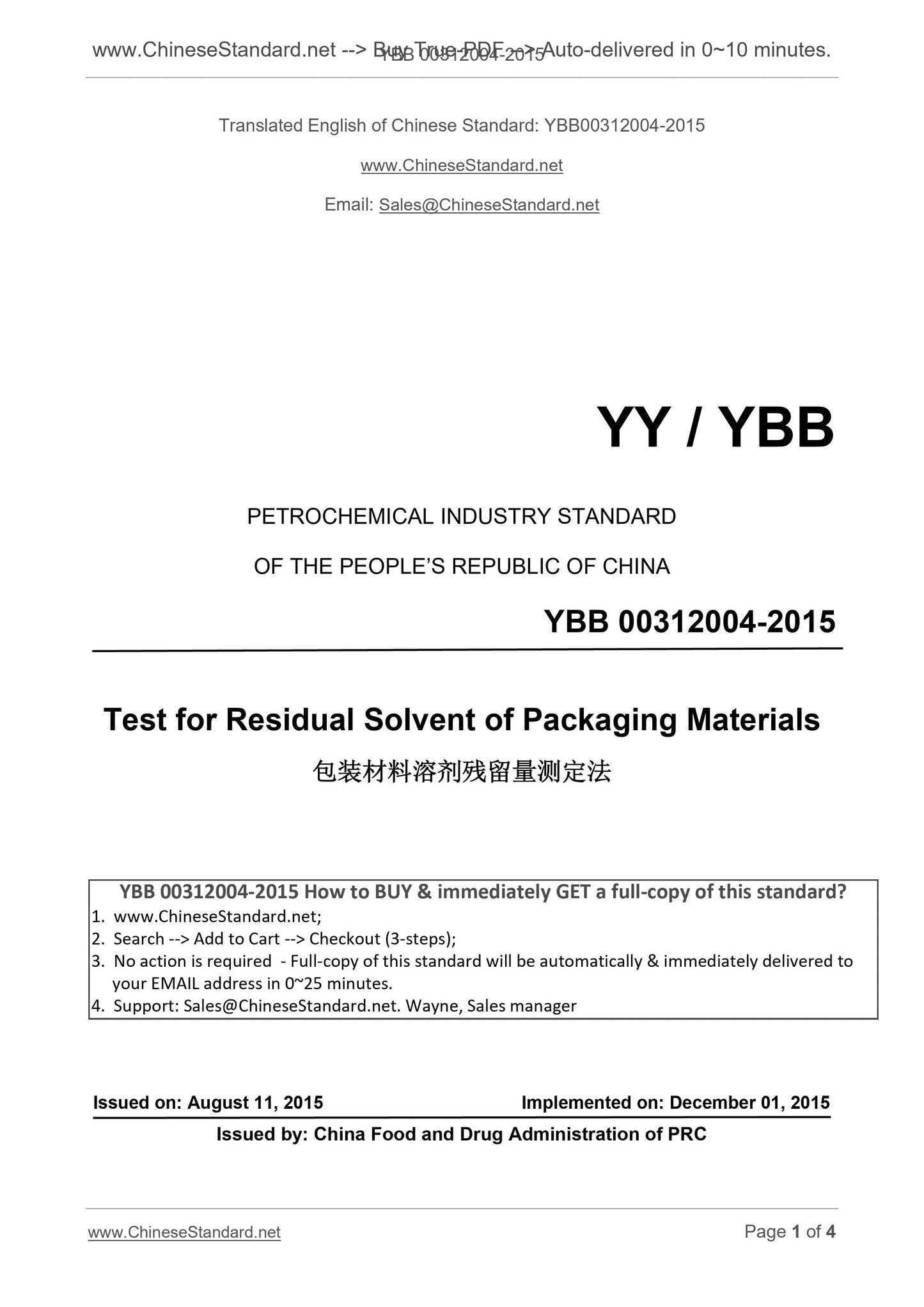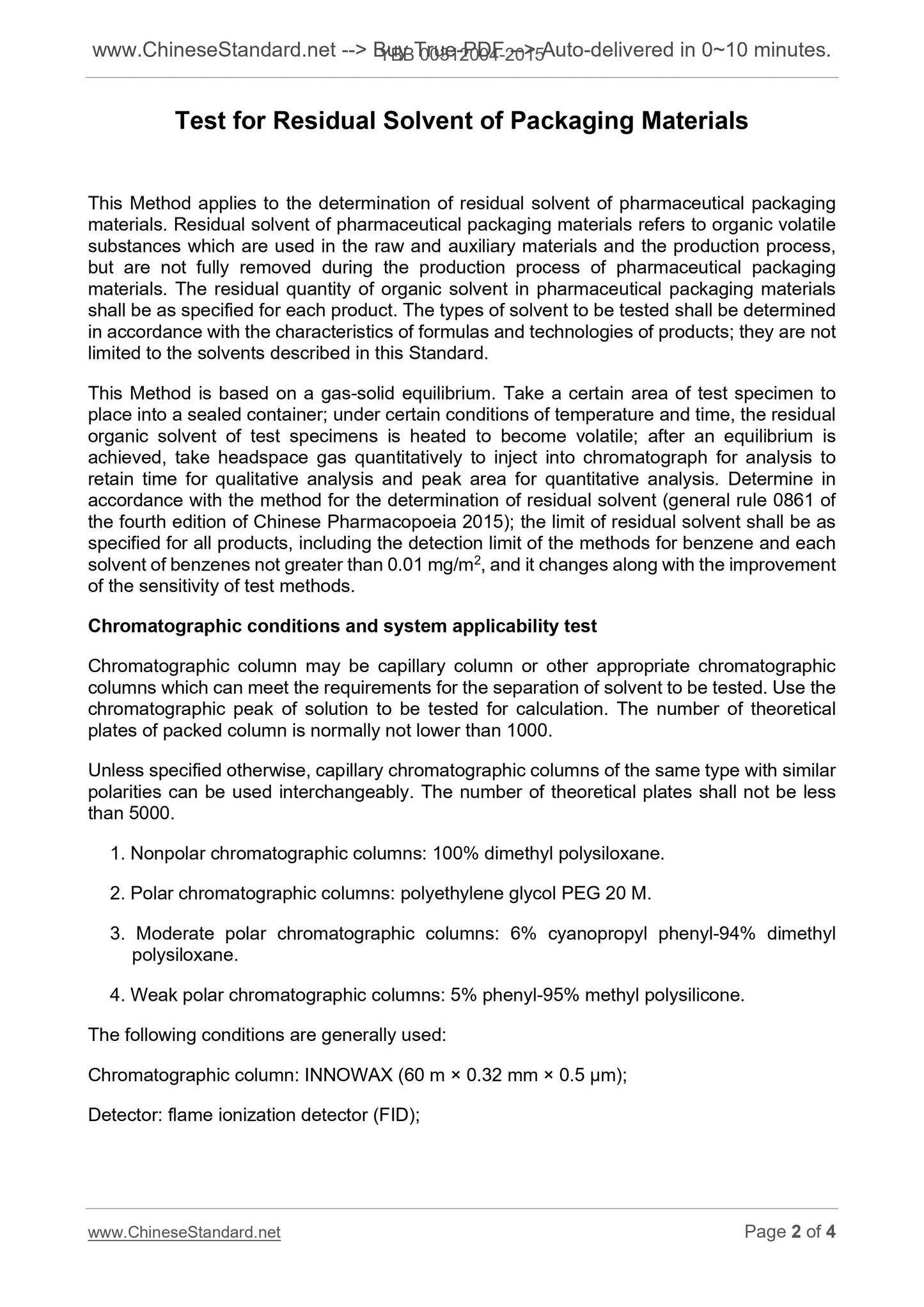1
/
of
2
www.ChineseStandard.us -- Field Test Asia Pte. Ltd.
YBB 00312004-2015 English PDF
YBB 00312004-2015 English PDF
Regular price
$100.00
Regular price
Sale price
$100.00
Unit price
/
per
Shipping calculated at checkout.
Couldn't load pickup availability
YBB 00312004-2015: Test for Residual Solvent of Packaging Materials
Delivery: 9 seconds. Download (and Email) true-PDF + Invoice.Get Quotation: Click YBB 00312004-2015 (Self-service in 1-minute)
Newer / historical versions: YBB 00312004-2015
Preview True-PDF
Basic Data
| Standard ID | YBB 00312004-2015 (YBB00312004-2015) |
| Description (Translated English) | Test for Residual Solvent of Packaging Materials |
| Sector / Industry | Medical and Pharmaceutical Packaging Industry Standard |
| Classification of Chinese Standard | C08 |
| Word Count Estimation | 3,377 |
| Date of Issue | 2015-08-11 |
| Date of Implementation | 2015-12-01 |
| Older Standard (superseded by this standard) | YBB 0031-2004 |
| Regulation (derived from) | China Food and Drug Administration Announcement 2015 No.164 |
| Issuing agency(ies) | China Food and Drug Inspection Institute |
Share



